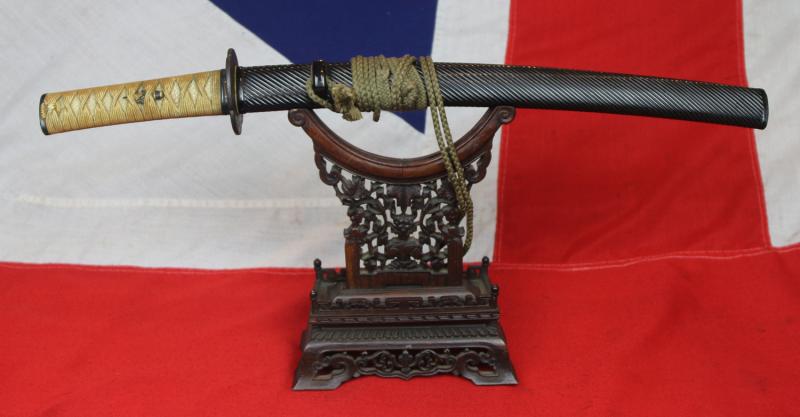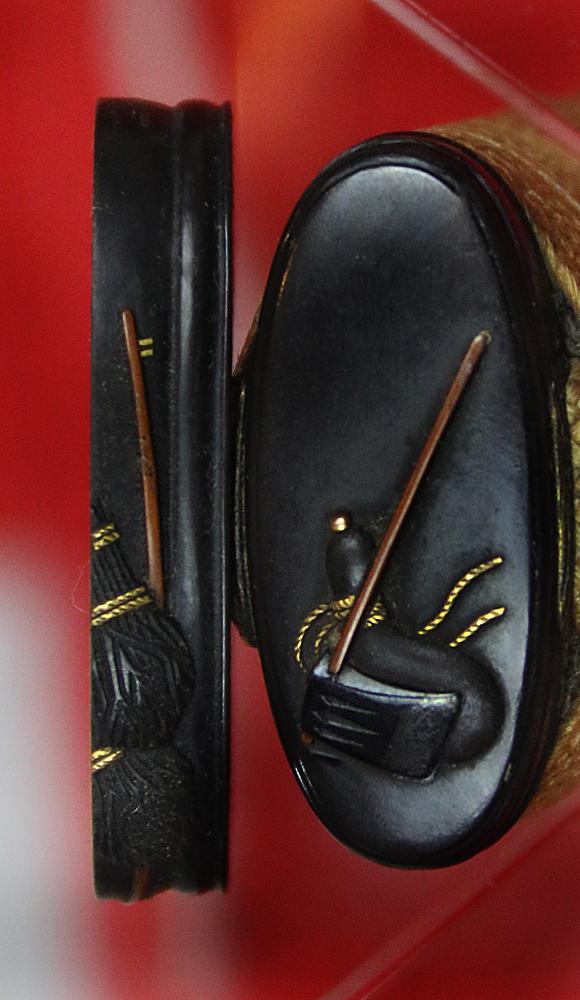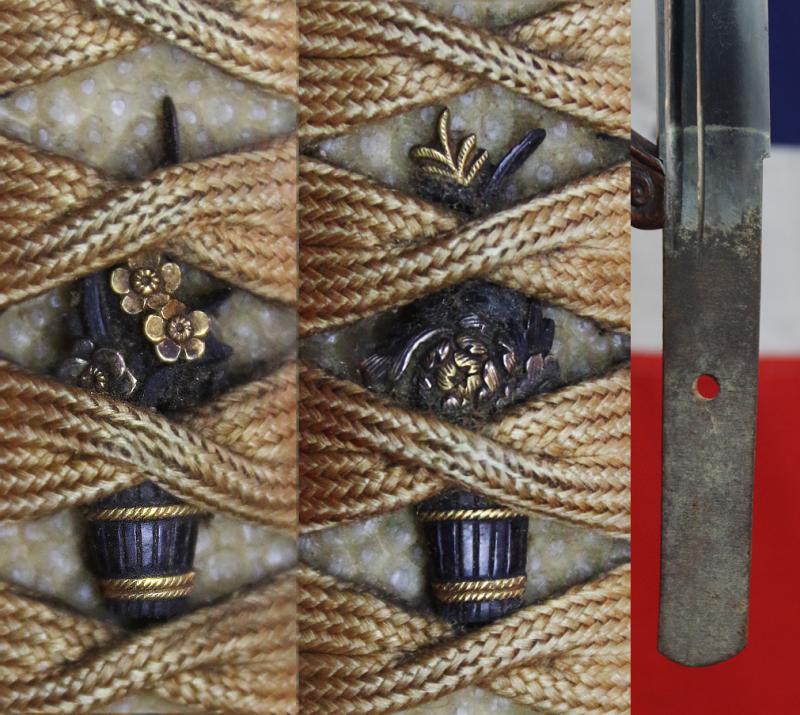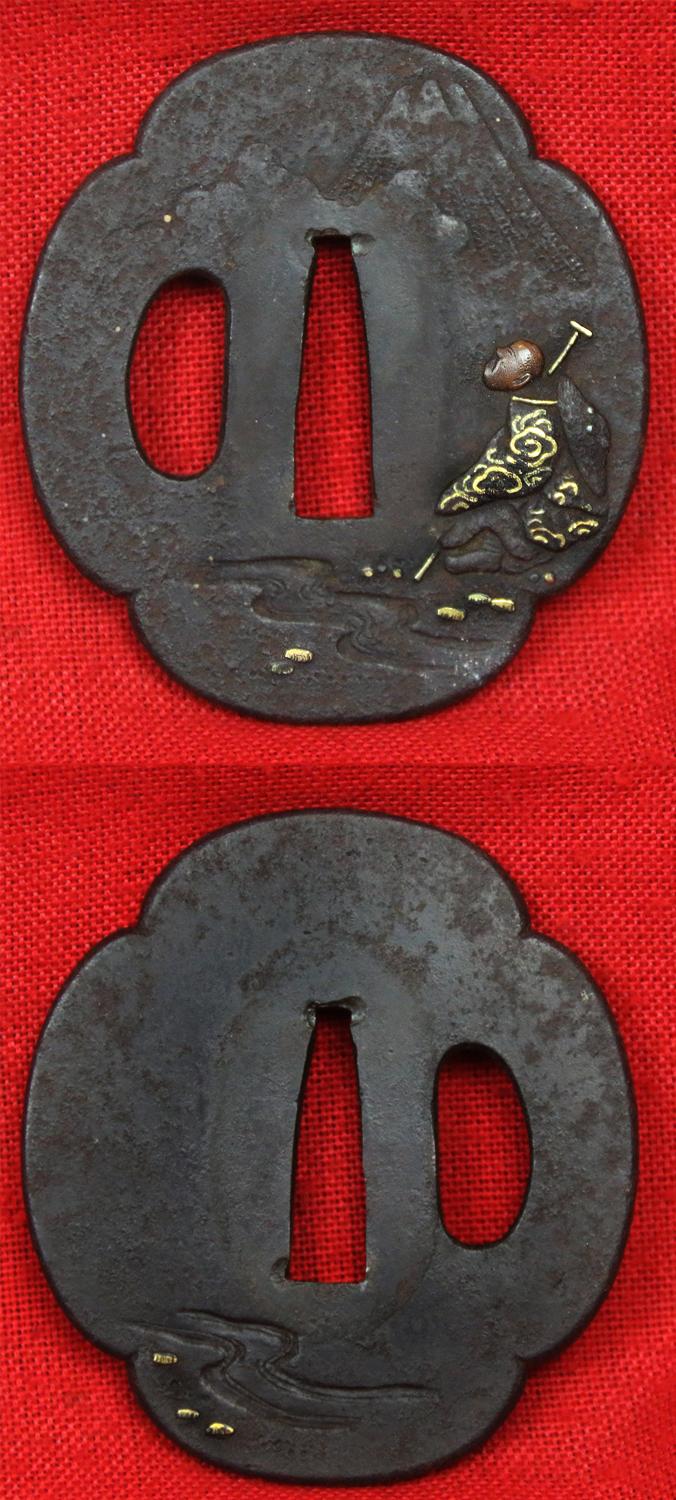A Shinto Samurai Naganata Naoshi Wakizashi With Shakudo Edo Fittings & Full Edo Traditional Polish
Just returned from a year of expert artisan conservation polish of the original Edo polish blade and cleaning. Now looking superb, the unokubi zukuri bo-hi blade with a vivid toran great wave hamon, is mounted with all original Edo shakudo koshirae of fuchigashira, decorated with takebori drinking gourd and woodsman’s axe, flower basket menuki and kozuka, which is decorated shakudo with gold birds in flight over the sea. With an iron and copper and gold onlay mokko form tsuba decorated with a seated figure in a gold patterned robe, alongside the river below Mount Fuji.
Beautiful urushi spiral lacquer pattern saya, The original Edo period urushi lacquer on the saya is in simply excellent condition and shows most elegant simplicity, it reveals within that simplicity the finest craftsmanship and beauty worthy of a master of the art of urushi decor. Japanese lacquer, or urushi, is a transformative and highly prized material that has been refined for over 7000 years.
Cherished for its infinite versatility, urushi is a distinctive art form that has spread across all facets of Japanese culture from the tea ceremony to the saya scabbards of samurai swords
Japanese artists created their own style and perfected the art of decorated lacquerware during the 8th century. Japanese lacquer skills reached its peak as early as the twelfth century, at the end of the Heian period (794-1185). This skill was passed on from father to son and from master to apprentice.
Tōran-ba is a hamon which looks like as if surging waves are rolling back and forth. It was created by a swordsmith in Settsu (Osaka prefecture), Sukehiro, in the early Edo period. It is the very first pictorial hamon which showed “a hamon as an expression”. It had a great influence on many swordsmiths over time. It is an innovative hamon which is copied on some swords made from the Bakumatsu.
A very few minuscule blade age marks..
Code: 24707
8750.00 GBP










